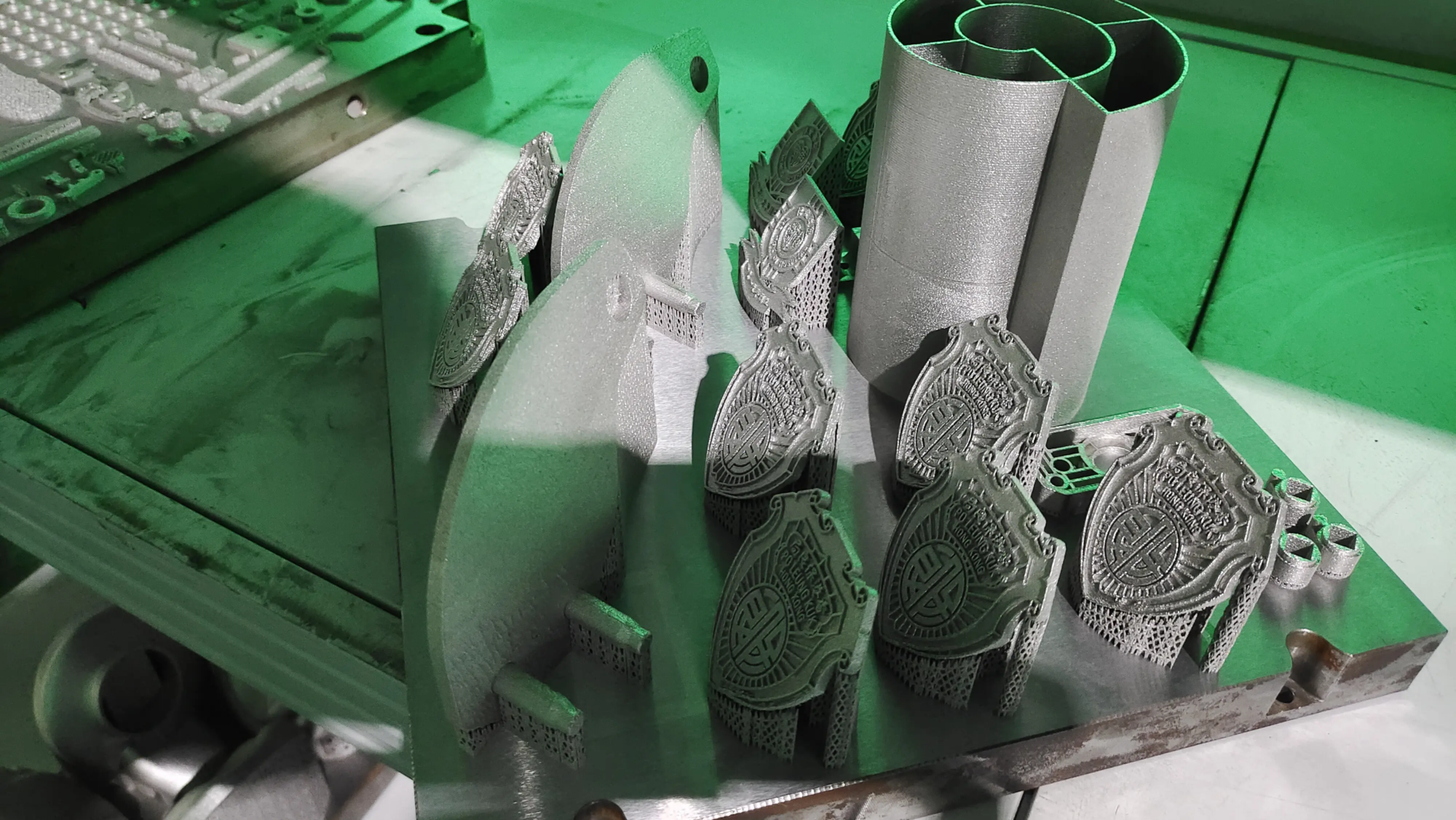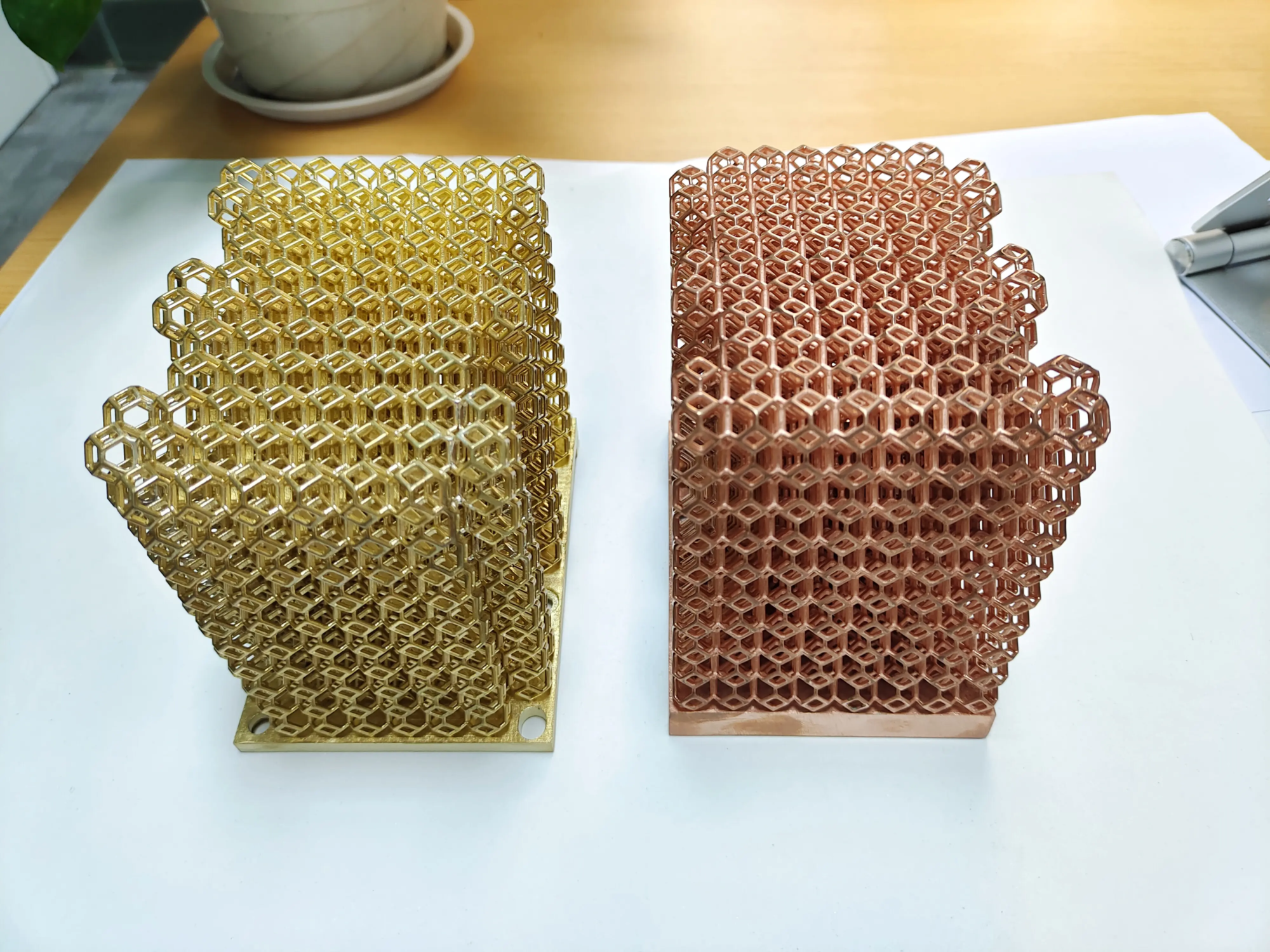Unlocking innovations in biomedical: Your NIH 3D Printing Exchange and Professional Manufacturing Guide
The biomedical world thrives in visualization, accuracy and innovation. Maintaining complex protein structures, examining detailed anatomical models or using custom lab equipment fundamentally changes the way researchers and clinicians interact with science. This is NIH 3D Printing Exchange (NIH 3DPX) As a game-changing resource – a central hub that promotes collaboration and accelerates discovery. Let’s dig into its essence, how to empower users and why professional manufacturing partners like Greatlight are crucial to realizing their full potential.
Understand NIH 3D Printing Exchange
Launched and maintained by the National Institutes of Health, the NIH 3D Printing Exchange is a free and open platform dedicated to the science, medicine and education communities. Its core mission is to promote interdisciplinary research and learning through the power of 3D printing. Think of it as a huge digital library, but it has no books, but contains well-curated 3D printable models:
- Biological structure: Proteins, viruses, DNA/RNA structures, cells, etc. – are crucial for molecular visualization and drug discovery.
- Anatomical model: Highly accurate representation of organs, bones and biological systems used in surgical planning, medical education and patient communication.
- Customized lab tools: Pipe racks, tube racks, microscope adapters and other functional laboratory equipment are often designed to improve workflows at the lowest cost.
- Education AIDS: The specially designed model is designed to illustrate complex biological processes for students at all levels.
NIH 3DPX not only stores files, but also provides a critical environment: detailed description, validated data for biomedical models, printing recommendations, lesson plans and tutorials to ensure that the model is available and scientifically reasonable.
Why NIH 3D printing exchange is important
The platform offers transformative advantages:
- Democratization of science: Researchers and educators, regardless of the size or budget of the institution, have access to high-quality models that were previously difficult to procure or create.
- Standardization and verification: A rigorous review process, including community and expert reviews, ensures the accuracy of the model, especially for biomedical applications. This builds confidence and repeatability.
- Come on and collaborate: Scientists around the world can share designs, build on each other’s work, and accelerate discovery. Shared custom lab tools with NIH 3DPX can improve protocols worldwide.
- Enhanced education: The tangible 3D model greatly improves the learning experience, making abstract biological concepts concrete and accessible to students.
- Accelerate innovation: Reduce barriers to prototype customization labs or visualizing molecular interactions, allowing faster iteration and hypothesis testing.
In addition to downloading: Key requirements for professional manufacturing
While finding and downloading the perfect model, the first step of successfully transforming digital blueprints into high-quality functional physical objects presents a major challenge. This is especially true:
- Complex geometric shapes: Models such as complex proteins or patient-specific anatomical replicas often have organic, complex shapes with drape and details to push the limits of consumer-grade printers.
- Metal Applications: Many research and medical applications require strength, biocompatibility and durability of metal parts – implants, surgical guides, professional tool fixtures or customized components for research equipment require Selective laser melting (SLM) Or similar advanced metal additive manufacturing (AM) technology. Achieving the necessary accuracy, finishing and material properties far exceed those of FDM or resin printers.
- Material expertise: The use of biocompatible materials (such as medical grade titanium or stainless steel) or specialized engineering polymers requires in-depth understanding of material properties, sintering curves and post-treatment requirements.
- Accuracy and repeatability: Research and medical use cases require consistent highly critical parts. Reliable achievement of this requires industrial-grade equipment, calibration processes and strict quality control.
- Post-processing: Complete steps such as stress therapy treatment, precise machining of key features, surface polishing (for biocompatibility or fluid forces), sterilization verification and removal of support structures are often critical to functional parts and require professional skills and facilities.
Here, Greatlight sets up a gap
As a major professional rapid prototyping manufacturer, Great Specially converting complex digital designs, including those derived from NIH 3D printing exchanges, into reality, especially when metal manufacturing and final accuracy are critical.
- Advanced SLM 3D Printing: Our state-of-the-art selective laser melting equipment can directly produce dense high-strength parts from powders such as powder (TI6AL4V), stainless steel (316L, 17-4PH), cobalt chrome plating, inconel and other powders. This is crucial for functional implants, high-pressure tools and biocompatible devices.
- Professional process mastery: In addition to printing, we provide deep expertise in optimizing AM design, selecting ideal material and process parameters, and ensuring the stability required for end-use applications.
- Comprehensive one-stop solution: We offer seamless end-to-end services:
- Expert Print Optimization: Evaluate the productivity of the NIH 3DPX model and propose improvements if needed.
- Extensive customization of materials: Access a wide range of metal and polymer combinations tailored to your functional requirements.
- Advanced post-processing: Comprehensive finishing, including CNC machining of critical tolerances, heat treatment, surface grinding, polishing (RA <0.8μm if needed), ultrasonic cleaning, anodizing, EDM, etc.
- Strict quality control: Dimensional inspection, material certification, surface roughness testing, and (for biomedical) biocompatibility verification.
- Speed and reliability: Utilizing optimized processes and production capacity, we provide fast turnaround for high-fidelity prototypes and end-use production parts at competitive prices.
Transforming thoughts into reality: practical application
Imagine some situations:
- Surgery breakthrough: Surgeons downloaded a complex model of congenital heart defects from NIH 3DPX. Greatlight uses biocompatible resin for preoperative planning and surgical simulations, and then manufactures patient-specific titanium surgical guidelines through SLM. Post-treatment includes precise processing and sterilization of the holes.
- Research Acceleration: The microbiology team downloads the model for custom microfluidic chip holders that require chemical resistance and precise alignment. Greatlight analyzes CAD, material requirements (chemical resistant polymer or 316 liter steel), prints it using appropriate technology (PolyJet/SLM), and performs CNC machining to perfect critical fluid interface.
- Education Excellence: Anatomy professor integrates NIH-derived SLM-printed titanium bone models into their courses. Greatlight ensures amazing accuracy, durability of repeated processing and complete anatomical details.
in conclusion
The NIH 3D Printing Exchange is an indispensable scientific and medical revolutionary tool that unlocks unprecedented access to proven 3D models. It empowers innovation and collaboration. However, realizing the full functional potential of these designs, especially for demanding biomedical, research or industrial metal applications, requires the expertise and capabilities of a professional manufacturing partner.
Greglight is ready to be your companion on this trip. With our advanced SLM technology, extensive material knowledge, unparalleled precision features and a comprehensive one-stop post-processing service, we transform NIH 3DPX digital assets and your custom designs into powerful, reliable, and high-precision physics solutions. Whether it’s a complex prototype or a critical end-use part, we professionally solve your rapid prototype challenges, ensuring quality and accelerating your progress.
Customize your precision fast prototyping parts now at the best prices! Learn how to bring your NIH sourcing design or original concept to life.
Frequently Asked Questions about NIH 3D Printing and Professional Manufacturing
Q1: Is NIH 3D printing exchange really free?
A1: Yes! Access, search, view and download models from NIH 3D Printing Exchange is completely free. You don’t need to be related to NIH.
Question 2: Can I contribute to the model to the exchange?
A2: Absolutely! Researchers, educators and clinicians are encouraged to contribute their 3D printable models. All submissions run through the curation process to ensure quality, relevance and appropriate documentation (including providing validation data for biomedical models).
Q3: What file formats are accepted on NIH 3DPX?
A3: Public distribution formats such as .stl, .obj, and .fbx are common. However, platforms like NIH Exchange increasingly support multi-component models, sometimes source files containing color/texture information (e.g. .blend).
pieceQuestion 4: I found a complex metal parts model on the NIH exchange. Can Greatlight be printed?
A4: Yes, that’s the core advantage. Greatlight’s advanced selective laser melting (SLM) technology produces complex high-strength metal parts directly from digital models. We deal with the complexity of metal powder bed fusion, including thermal management and support for structural design/removal. Our extensive material portfolio (titanium, steel, inconel, etc.) and precision post-treatment ensure that parts meet functional requirements.
Q5: My lab downloaded a model, but our internal FDM printers struggle with complexity. What can Greatlight do?
A5: Does Greatlight provide various technologies outside FDM, including industrial stereolithography (SLA)? , Selective Laser Sintering (SLS)? , Polyjet and Metal SLM. We can advise on the optimal process (resin, nylon or metal) on the geometry and purpose of the model. We also perform expert support for disassembly, machining of critical functions, finishing (e.g., smoothing, painting), and ensuring dimensional accuracy beyond desktop functions.
Question 6: Do you provide material certification and biocompatibility testing for medical parts?
A6: Yes. For medical applications using metals, we provide complete material traceability and certification. We can also perform or promote biocompatibility testing as needed according to relevant standards (ISO 10993). Our precise machining ensures a clean, polished surface is essential for implantation. Discuss your specific regulatory needs when requesting a quote.
Question 7: How does the process work if I have a model and want Greatlame to make the process?
A7: Very simple:
- supply: Send us your model file (e.g. from NIH 3DPX or your design) and specify your requirements (materials, quantity, critical dimensions/tolerances, required completion, end-use environment).
- consult: Our engineers review documents, discuss the best printing techniques and materials, recommend any manufacturing adjustments, and provide quotes.
- Orders and production: You have approved the quote and we continue to print and specialized post-processing.
- deliver goods: You will get high quality ready-made parts through agreed documentation.
Question 8: Why choose Greatlight over other rapid prototyping services?
A8: Gremplight pass:
- Advanced Metals Expertise: Deep specialization of reliable high-quality SLM metal printing.
- A true one-stop service: Under strict quality control, comprehensive internal post-processing (CNC machining, heat treatment, surface finish).
- Material Breadth and Customization: A wide variety of metals and polymers tailored for complex and demanding applications.
- Focus on precision and functionality: The engineering mindset is designed to produce functional prototypes and end-use parts.
- Competition speed and value: Effective process delivers professional results quickly at the best prices.





